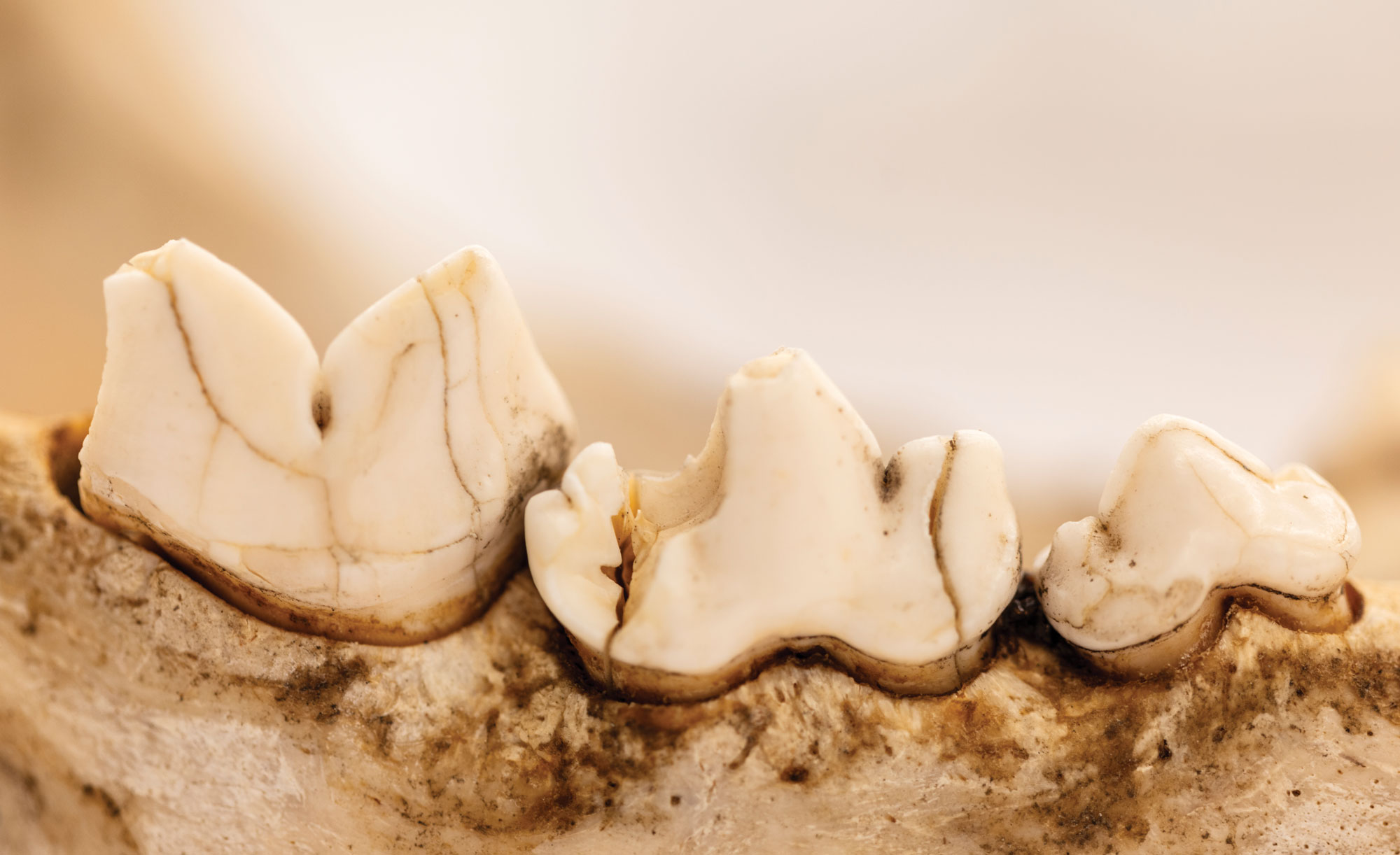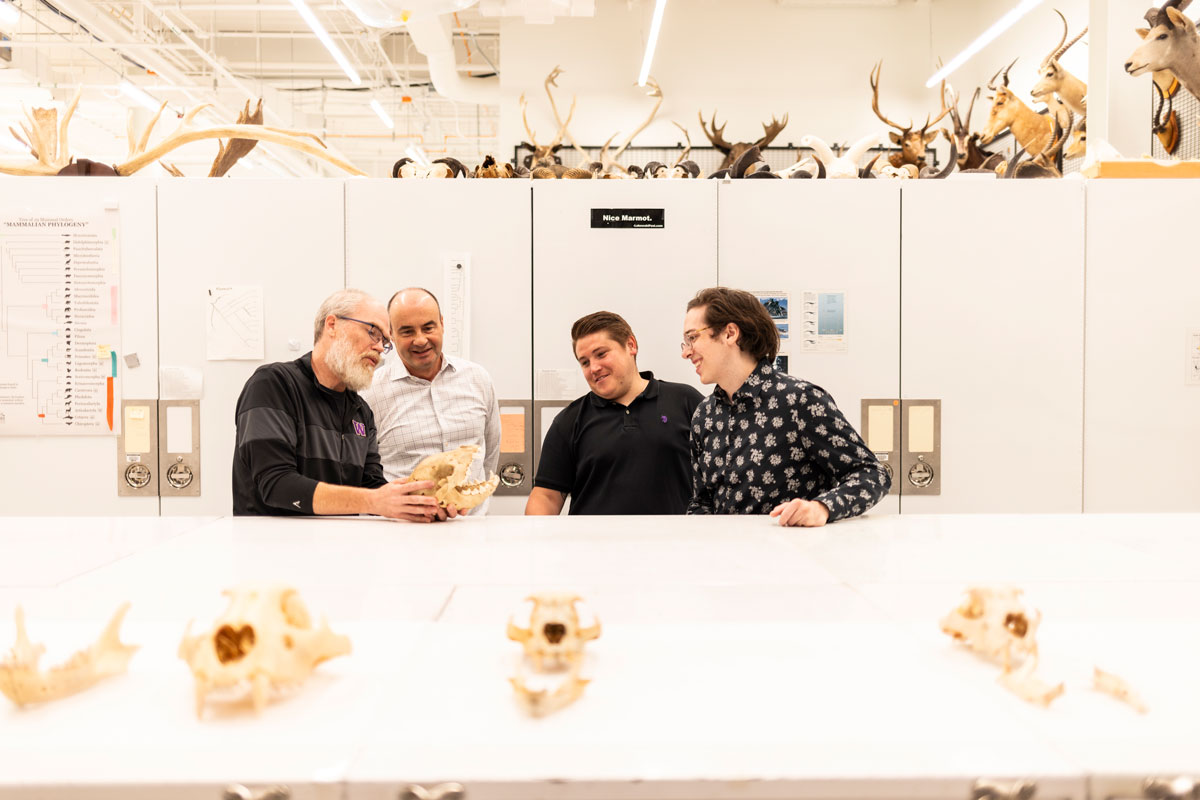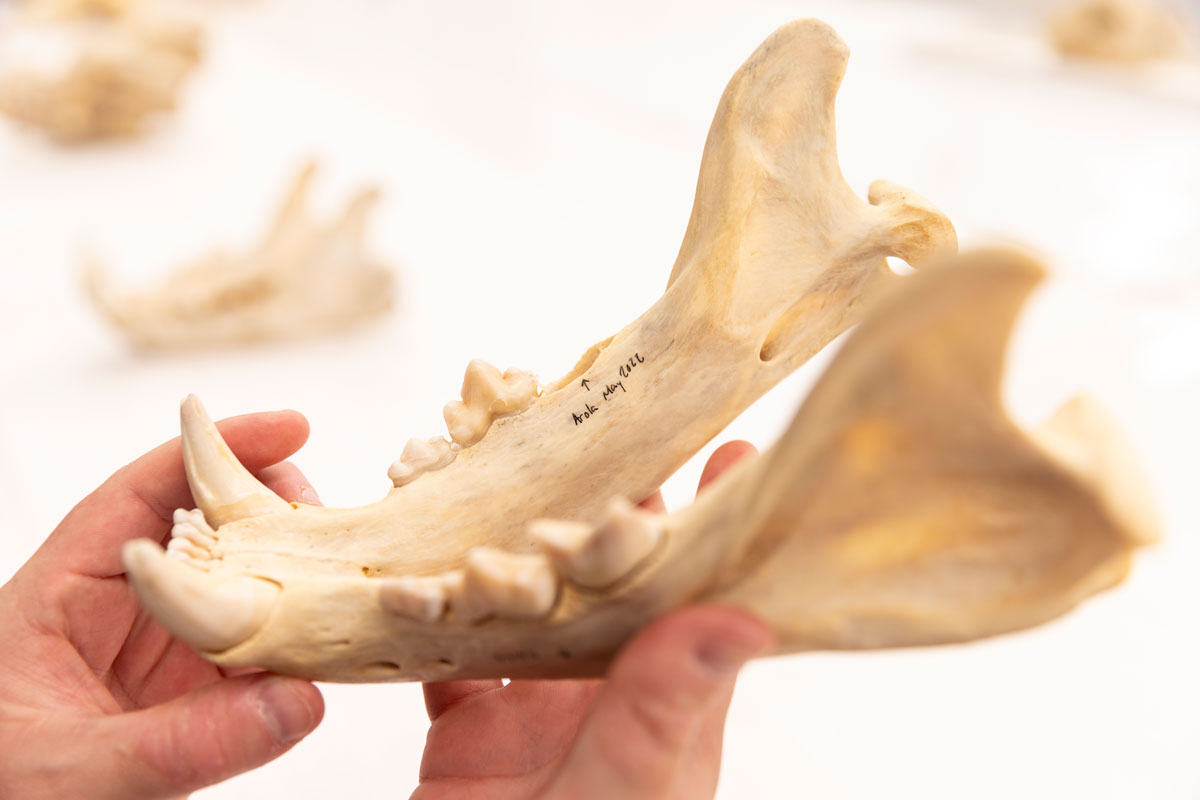

Breaking a tooth on a sandwich led to an aha moment— and a potential breakthrough for creating tough synthetic materials. The broken tooth and the revelation both belonged to Dwayne Arola, ’89, ’91, ’96, a UW professor of materials science and engineering with adjunct appointments in mechanical engineering, oral health sciences and restorative dentistry. “My dentist said teeth have a way to resist fracture,” he says. “They’re a mixture of mineral and organic materials, a composite of sorts— so I got interested in why that occurred.”
Arola’s interest led a team of University of Washington researchers to explore exactly how enamel, the outer layer of a tooth, works to keep teeth functioning throughout a lifespan. Their goal is to develop the next generation of synthetic materials, inspired by the design of tooth enamel to manage cracks and withstand strong forces.

Since other animals’ tooth enamel is less dense than that of humans and not typically fluoridated, it’s easier to view its underlying microstructure. By analyzing molar specimens from lions, African wild dogs, gray wolves, black bears, snow leopards and other predators, borrowed from the Burke Museum of Natural History & Culture’s impressive collection, the team has learned that enamel’s ability to weather cracks comes from decussation—the woven pattern in its microstructure. The team recently turned to studying diferences in enamel among primates, examining changes related to diet and evolution. Says Arola, “I never imagined that breaking a tooth would lead to such an interesting adventure.”
Tough, wear-resistant synthetic materials modeled after these patterns could have a variety of uses, from armor for tanks to ballistics and aerospace. On the prospect of helping inform the next generation of strong materials, the research team is all smiles.
